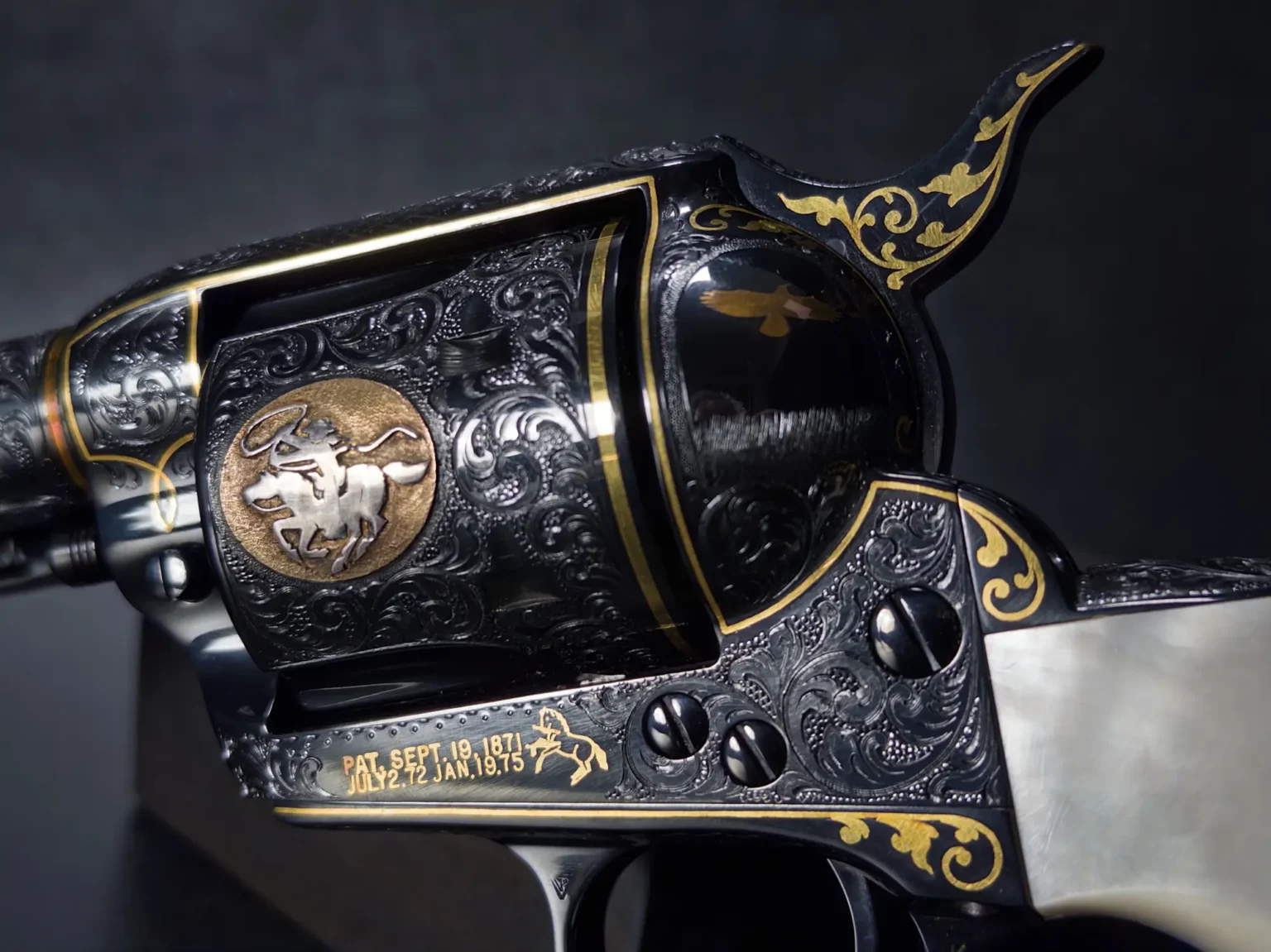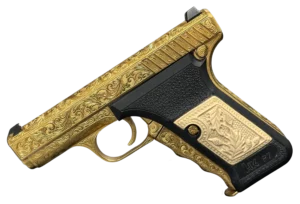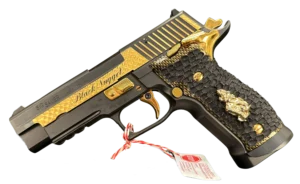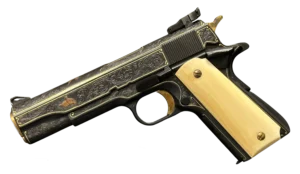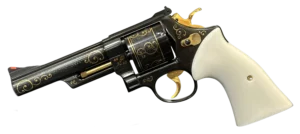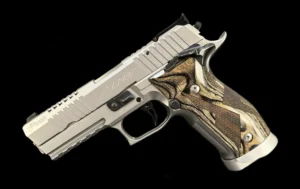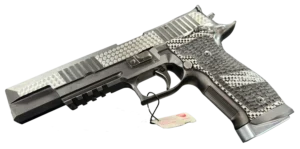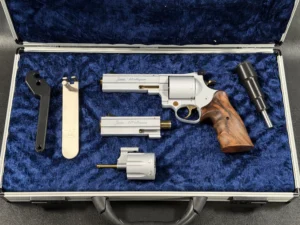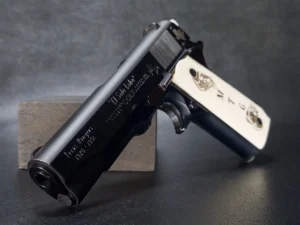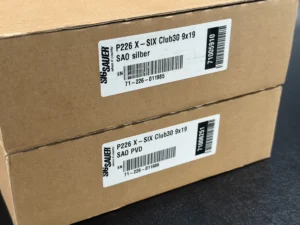Key Takeaways:
- Die-Cutting Precision Made Him Different: White wasn’t just another talented engraver; his background cutting dies at the Balfour Company gave him an exceptional level of precision that most artists never develop. Those years of creating perfect steel templates, where one mistake ruins everything, translated into scrollwork that was “deep, deliberate, and impossibly clean.” It’s why his work had that geometric perfection while still feeling artistic. You can’t fake that kind of muscle memory.
- His Art Transcended Cold War Politics: The presidential commissions are impressive enough; every U.S. president from Kennedy through Reagan owned his work. However, what really gets me is that during the Cold War, both the American president and Soviet leader Brezhnev had White pieces. That’s not just craftsmanship, that’s art operating on a level above ideology. King Hussein of Jordan, J. Edgar Hoover, world dignitaries across the political spectrum… White’s work represented a global standard of excellence that everyone recognized, regardless of their position.
- He Saved the Craft by Teaching It: White didn’t just create masterpieces and guard his secrets. He actively mentored the next generation, including Andrew Bourbon, Dan Cullity, and others who kept his techniques alive. Over 2,500 firearms bear his mark, many of which were crafted under his supervision by assistants, and he was entirely transparent about that. By training successors and maintaining exceptionally high quality standards, he ensured that decorative firearms engraving survived the 20th century, when many traditional crafts died out. The “Dean” title stuck because he actually acted like one, teaching, preserving, and passing it on.
Look, I’m not even a gun person, really. But there’s something about Alvin A. White’s work that gets me every time I see it. The man took hunks of metal and transformed them into something that belonged in a museum, not in a dusty historical artifact, but in the “holy shit, look at that scrollwork” way.
White died in 2006 at the age of 91, and if you are familiar with firearms engraving, you will see the title that follows him: “The Dean of American Arms Engravers.” It’s not just marketing fluff. The guy earned it. Born around 1914 or 1915 in Attleboro, Massachusetts, although the exact year is uncertain, he spent most of the 20th century proving that gun engraving wasn’t just a dying art form from the 1800s. He made it contemporary. Relevant. Gorgeous.
And here’s the thing that always strikes me: White engraved guns for every U.S. President from Kennedy through Reagan. Every. Single. One. Also for Soviet leader Leonid Brezhnev. Also for King Hussein of Jordan. Consider that for a moment—during the Cold War, both the American president and the Soviet premier owned pieces by the same American engraver. That’s not just craft. That’s art transcending politics.
The Precision Background (Or: How Die Cutting Made Him Deadly Good)
Before White became the person presidents wanted to have engraved on their presentation pieces, he was just a metalworker in Massachusetts. He worked at the L.G. Balfour Company, which is known for making class rings, cutting dies, and hubs. Sounds boring, right? But this is where it gets interesting.
Die cutting is absurdly precise work. You’re creating steel templates that must be absolutely perfect because they’ll stamp out thousands of identical pieces, with zero tolerance for error. Perfect symmetry. Every single time. It’s the kind of work that either drives you crazy or teaches you a level of control most artists never develop.
For White, it was the latter. That industrial discipline became the foundation of everything he did later. People who know his work describe his cuts as “deep, deliberate, and impossibly clean.” That’s not just talent; that’s years of cutting dies where one mistake can ruin the whole piece. Unlike engravers who came up through more free-flowing artistic traditions, White had this geometric precision baked into his muscle memory.
Then came World War II. He joined the Army Air Corps in 1942, served in North Africa and the Pacific. And when he came home? Friends started asking him to work on their guns, just casual stuff at first. However, the work was so good that word spread, and by the late 1940s to early 1950s, he was transitioning to engraving full-time.
Can you imagine that moment? Coming back from war, doing some engravings for buddies, and realizing, “Wait, I could actually do this for a living.”
The Colt Years: When Everything Changed
White started working for Colt in the 1950s and pretty quickly became a Master Engraver. That title meant something back then, still does, honestly. It wasn’t just a job; it was this signal to the world that Colt was serious about maintaining the old traditions even as they modernized everything else.
In 1961, he took a bold step: he founded A.A. White Engravers, which became Colt’s official engraving operation. Started solo, eventually brought in other master engravers to work under him. He was in-house from 1961 to 1976, then continued working on commission after that. The setup was interesting; he’d supervise a team, and the work would still bear his mark, his signature, even when assistants did part of the engraving. That’s how confident everyone was in his oversight.
You know what’s weirdly fascinating? White worked on a wide range of firearms, including European pieces, flintlock Kentucky rifles, and Smith & Wessons, among others. But he’s forever linked to the Colt Single Action Army revolver, the SAA, the “Peacemaker,” the iconic Western six-shooter. White’s work on those guns—the floral scrollwork, the gold inlay, those pearl grips helped keep the SAA relevant in the modern collector market. He transformed an old Western symbol into art.
What Made His Style Different (And Why It Matters)
Okay, so here’s where we delve into the technical details, but stay with me because it’s actually quite interesting.
White’s scrollwork was distinctive. Balanced, readable, deeply cut. He’d use this punch-dot background texture that made the engraving pop off the metal. One collector described it as “shadows giving shape to light,” which, in my opinion, is a perfect description.
But the real signature move? Multi-metal inlay. Gold and silver, sometimes lower-karat alloys for durability and different tones. He’d use these to outline scrolls, highlight functional parts, and create entire vignettes. And here’s what I find brilliant: he deliberately incorporated American imagery. Relief-engraved bison heads on recoil shields. Western themes. Iconography that spoke to American collectors obsessed with Old West mythology.
See, European-style floral scrollwork is beautiful, but White understood his market. Post-World War II American collectors sought something that felt distinctly their own. So he gave them scrollwork with American soul. Smart, right?
The individual clearly studied the masters who came before him, including Gustave Young and Louis Daniel Nimschke, the 19th-century greats, and synthesized their styles into something contemporary. He honored the history while making it his own. That’s harder than it sounds.
The Presidential Portfolio
Let’s discuss the diplomatic aspects, as this is where White’s reputation really solidified.
Every president from Kennedy through Reagan. Think about that timeline: JFK in the early ’60s, LBJ, Nixon, Ford, Carter, Reagan in the ’80s. Different politics, different eras, different everything, but they all wanted an A.A. White piece. These weren’t just ceremonial gifts, either. They were statements about American craftsmanship at its finest.
The J. Edgar Hoover piece is fascinating, a Smith & Wesson Model 19 .357 Combat Magnum, engraved and gold-inlaid, presented by collector William Sweet. Hoover, for all his… let’s say “controversial legacy,” knew quality when he saw it.
But the Brezhnev commission? That one always stops me. We’re talking Cold War tensions, the Soviet leader getting an engraved American gun. The art itself became a bridge, something beyond ideology. That’s the power of what White did; his work represented a recognized global standard of excellence that transcended political divisions.
King Hussein of Jordan also received one. The list goes on.
The Met Museum Piece (Or: When Gun Engraving Became High Art)
- The Metropolitan Museum of Art. White creates a Colt SAA for their benefit auction, serial number MMA-1, of course, and this thing is ridiculous.
Eighteen-karat gold inlays. Not just decorative flourishes, but deliberate references to specific objects in the Met’s Arms and Armor collection. A Peter Peck wheelock pistol. A gold dolphin. A Merovingian shield boss. White wasn’t just showing off his technical skills; he was demonstrating academic rigor, proving he understood arms history at a scholarly level.
Some experts call it the most inspired work of his career. And you know what? It secured his place not just as a craftsman, but as a serious artist. This was a gun that belonged in the same conversation as any decorative art in that museum. That’s no small achievement.
The Autry Museum got in on the action, too, starting in 1991. They’d commission these exhibition-grade revolvers for their annual galas over the next decade, done by White and later in collaboration with Andrew Bourbon: gold-inlaid Western motifs, images of the museum building, and the whole nine yards. Western actor Richard Farnsworth bought the 1996 piece, which, I don’t know, feels right somehow.
Beyond the Barrel: The Polymath Nobody Talks About Enough
Here’s something that doesn’t get enough attention: White wasn’t just a gun engraver.
The man was an antiques restorer, painter, scrimshander, woodcarver, jewelry maker, and sculptor. Seriously. His personal collection, later auctioned off, included candlesticks, bronze sculptures, miniature Old West items, and scale firearms. In his later years, he even designed and cut dies for Pairpoint Glass Works. His favorite project? A cup plate series featuring Burgess characters for the Thornton Burgess Society.
That last detail tells you something about White as a person. He was a “great outdoorsman, naturalist,” a guy with Mayflower lineage who never got too big for his britches. Despite global recognition, he kept a “simple, but fascinating workshop” and was known for being generous with his knowledge.
This versatility matters because it explains why his gun engraving had such integrity. He understood three-dimensional form as a sculptor would. He respected patina and history like a restorer. He had die-cutter precision. All of it combined into work that felt complete, considered, whole.
You can’t fake that kind of depth.
The Signature Question (And Why Attribution Gets Complicated)
White’s signatures varied. Sometimes, complete inscriptions read: “A.A. White ENGR.” Sometimes initials: “AAW” or “AW.” Usually on trigger guards or under grips. But here’s where it gets interesting and a bit complicated.
Even when assistants did the actual engraving, the work bore his mark if he oversaw it. Andrew Bourbon, for instance, worked for White for years, but the pieces were credited to White. W. Dan Cullity, a Colt factory engraver from 1971 to 1973, started his career under White’s supervision in the same deal.
So when you see “A.A. White,” what are you actually getting? That’s the attribution question that drives collectors and historians a bit nuts. Conservative estimates indicate that over 2,500 firearms were engraved under his name during his career. How many did he personally cut every line on? How many were supervised? The shop records aren’t complete, and detailed attribution between White’s personal work and that of his assistants remains somewhat murky.
But honestly? The fact that collectors still paid premium prices knowing this speaks volumes. White’s oversight, his standards, and his final approval meant something. The mark carried weight regardless.
The Market Legacy (Or: Why People Still Pay Big Money)
White’s pieces consistently perform well at auction. Rock Island Auction Company and Heritage Auctions regularly feature his work, and it reliably commands strong prices for 20th-century engraving.
Part of that is provenance. R.L. Wilson, the firearms historian, extensively documented White’s work; there’s an entire 30-page chapter on him in “The Book of Colt Engraving” (pages 447-476). Wilson’s documentation became part of the permanent record, enhancing the value of documented pieces. If your White gun is in a Wilson book, that’s gold sometimes literally and figuratively.
Items from the White family’s personal collection carry extra significance. These were pieces he made for himself, artistic samples, works he chose to keep. That adds a layer of authenticity and emotional resonance you can’t manufacture.
The market validates what collectors already knew: White’s combination of historical awareness, technical mastery, and artistic vision created work that holds up. It’s finite, it’s documented, and it’s genuinely beautiful. That’s a recipe for lasting value.
The Teaching Legacy
White didn’t just create art; he made sure the tradition survived.
He actively mentored the next generation. Andrew Bourbon and Daniel Cullity aren’t just names; they represent the continuation of White’s specific approach to engraving a fusion of die-cutting precision and artistic flair. By explicitly taking on protégés and teaching his methods, White ensured his style would outlive him.
That’s not something every master craftsman does. Some guard their techniques jealously. White shared. Perhaps it was because he understood that a living tradition requires new hands, or maybe he was simply generous by nature. Either way, contemporary American engraving still shows his influence. You can trace the lineage.
People remembered him as someone “always willing to share his knowledge with others.” In a field where ego can run high, that’s notable. And practically, the Dean title means nothing if the school dies with you.
The Institutional Validation
White’s work lives in the NRA National Firearms Museum. The Autry Museum. The Metropolitan Museum of Art, for crying out loud. Those aren’t accidental placements. Museums are careful about what they preserve, what they present as culturally significant.
His pieces appeared on the covers of American Rifleman and Man at Arms, the influential collector magazines. A prominent feature in American Rifleman in 1967 helped cement his reputation early. This wasn’t just peer recognition; this was the broader culture acknowledging that what he did mattered beyond the niche.
The institutional presence ensures his work will be studied, preserved, and appreciated by future generations. That’s immortality in the art world. Not bad for a die cutter from Massachusetts.
What We Still Don’t Know
Despite all the documentation, some things remain a mystery. White’s early training isn’t fully mapped out. Complete shop records don’t exist. The exact attribution between his personal work and that of his assistants remains underdocumented.
A comprehensive catalog of authenticated A.A. White works would be really valuable to the field. Collectors would love it. Historians need it. But compiling that would require access to scattered private collections, auction records going back decades, and family archives. It’s doable, but it hasn’t been done yet.
Perhaps someone will take on that project. The raw material exists, R.L. Wilson’s work provides a foundation, auction houses have records, and collectors have pieces. It’d be a hell of a dissertation for some graduate student interested in American decorative arts.
Until then, we have what we have: documented masterpieces, institutional holdings, and the consensus that White was simply the best at what he did.
Why It All Matters
Here’s the thing about Alvin A. White: he kept decorative firearms engraving alive when it could have easily died out. The 20th century wasn’t kind to traditional crafts. Mass production, changing tastes, economic pressures, and a plethora of old skills have just vanished.
But White provided the technical excellence, institutional visibility, and commercial success that the craft needed to survive. He proved you could make a living at it. He demonstrated that engraved firearms were not merely historical curiosities, but a form of high art. He trained successors who continued the tradition.
And he did it all while maintaining insane standards. The work had to be perfect. The cuts had to be clean. The inlays had to be flawless. Every single time. That consistency over decades, across thousands of pieces, that’s what separated him from talented engravers who were merely exemplary.
White elevated the craft’s standing permanently. When people talk about 20th-century American engraving now, they’re measuring everyone else against his standard. That’s the definition of a legacy.
The Final Cut
Alvin A. White died in May 2006 in Sandwich, Massachusetts, probably in his workshop or somewhere near it—though I’m just guessing on that last part. Ninety-one years old. Seven decades of work behind him. A career that began with designing dies for class rings and culminated in pieces featured in the Metropolitan Museum of Art.
The “Dean of American Arms Engravers” title fits perfectly because it captures both his technical supremacy and his role as a teacher and guardian of the tradition. He wasn’t just the best; he was the standard-bearer, the one who ensured the craft had a future.
You can still find his work at auction, in museums, and in private collections. Each piece is a minor miracle of precision and artistry, featuring crisp scrollwork, vibrant gold inlay, and powerful iconography. Immediately recognizable if you know what you’re looking for.
And honestly? I think White would’ve liked it that way. Not the fame or the museum placements or the presidential commissions, though those were nice, I’m sure, but the fact that people still care about the work. That they still study it, collect it, and preserve it. That young engravers still try to match his cuts.
The art survived. The tradition continues.
That’s what a Dean does.
Frequently Asked Questions
White was arguably the greatest American firearms engraver of the 20th century, and, yes, I know “arguably” is doing some work there, but the consensus is pretty solid. Born around 1914-1915 in Massachusetts, he spent decades turning guns into genuine works of art. The kicker? He engraved presentation pieces for every U.S. President from Kennedy through Reagan. Also, for Soviet leader Brezhnev during the Cold War. Also for King Hussein of Jordan. The guy’s work transcended politics and ended up in places like the Metropolitan Museum of Art. So if you care about American craftsmanship, decorative arts, or just insanely beautiful metalwork, White’s your guy.
It’s not just a fancy nickname; it’s the title that follows him around because he genuinely earned it. White didn’t just do great work; he set the standard against which everyone else was measured. He kept the entire tradition of decorative firearms engraving alive during the 20th century when it could’ve easily died out. Additionally, he actively taught the next generation, passing on his techniques to protégés such as Andrew Bourbon and Dan Cullity. A dean teaches, right? White did both: he created masterpieces and ensured the craft survived him. That’s why the title stuck.
Two things, really. First, his background as a die cutter gave him this geometric precision most engravers never had. His cuts were impossibly clean, deeply deliberate, perfectly balanced, and came from years of working with industrial metal, where mistakes weren’t an option. Second, he deliberately incorporated American imagery. While European engravers adhered to traditional floral scrollwork, White incorporated relief-engraved bison heads, Western themes, and iconography that resonated with American collectors. He understood his market. Post-WWII Americans wanted something that felt distinctly theirs, so he gave them scrollwork with an American soul. Smart and gorgeous.
Nope, and this is where it gets interesting. White founded A.A. White Engravers in 1961 and supervised a team of master engravers. Even when assistants did the actual engraving, the work bore his mark if he oversaw it. Andrew Bourbon worked for him for years, but the pieces were credited to White. The attribution between his personal work and that of his assistants isn’t fully documented, as shop records aren’t complete, which drives collectors a bit nuts. However, here’s the thing: collectors were aware of this and still paid premium prices for White’s oversight, his standards, and his final approval that meant something. The mark carried weight.
Nah, he worked on all kinds of stuff: European arms, flintlock Kentucky rifles, Henry Deringer-style pistols, Smith & Wessons, Winchester lever actions, you name it. But yeah, he’s forever linked to Colt, especially the Single Action Army revolver (the classic Western six-shooter). He became a Colt Master Engraver in the 1950s and founded A.A. White Engravers in 1961, which became Colt’s official engraving operation. His work on Colt SAAs, featuring floral scrollwork, gold inlay, and pearl grips, helped keep the gun relevant in the modern collector market. So while he wasn’t exclusive to Colt, that’s definitely where his reputation was built.


